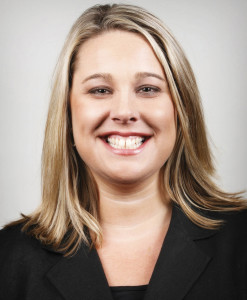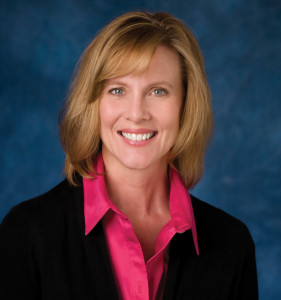How nursing and supply chain professionals can form stronger partnerships to reduce medical errors
Supply chain professionals spend their working hours interacting with pricing spreadsheets and hard data, laboring to improve their facilities’ bottom-line results. Many are realizing just how vital nurses are to supply decision-making. Invested in ensuring the highest standards of safety for their patients, nurses lend a front-line, patient-centric perspective.
The voice of nursing professionals in supply chain decision-making ensures that purchased products and equipment aren’t just cost-effective, but also fit strict clinical standards, decrease error-causing variances and help prevent hospital-acquired infections.
The Source recently talked with chief nursing officers at three hospital systems—Catholic Health Initiatives, Hospital Corporation of America and LifePoint—to find out how they collaborate with supply chain leaders at their organizations and the value they bring to discussions surrounding patient safety and product selection.
Kathleen Sanford
Senior Vice President and Chief Nursing Officer, Catholic Health Initiatives
The Source: How do nurses influence supply chain professionals when it comes to patient safety?
Sanford: At Catholic Health Initiatives we recognize the importance of clinical leaders and supply chain professionals working together to select the right supplies and products to increase our value equation, which focuses on quality, safety and cost. In 2013, we added a supply chain leader to our national Clinical Leadership Council (CLC), the governing body for all clinical issues that are standardized across the system. SafetyFirst, our evidence-based practice program, as well as our clinical IT projects and service lines, all report to the CLC for clinical governance and decision-making.
The Source: What is SafetyFirst?
Sanford: SafetyFirst is Catholic Health Initiatives’ system-wide program offering the safest care to patients as well as a safe working environment for our medical staff and employees at every care location across the country. The goals of SafetyFirst are to improve patient and employee safety, increase error reporting, and highlight near-misses to help prevent future occurrences and help us achieve our goal of zero events of preventable harm by 2020.
Since implementing this program, thousands of Catholic Health Initiatives’ employees and physicians have attended error-prevention training. Doctors, nurses and other support staff have adopted proven safety behaviors that are based on high-reliability science used by industries such as commercial aviation, nuclear power and naval/maritime. In addition, specially trained safety coaches are working side by side with our staff, helping our caregivers, patients and their families ensure safe care. New measurement tools provide constant feedback so our staff can learn and make improvements.
The Source: How have nurses and supply chain professionals worked together to implement Catholic Health Initiatives’ SafetyFirst initiative?
Sanford: The supply chain leader on our national CLC serves along with physician, nursing and pharmacy leaders, and a regional CFO, COO and CEO. Including a supply chain leader as a full voting member ensures a voice for that very important part of the value chain, as well as communication between disciplines.
The Source: Can you share some specific examples of how errors have been successfully reduced due to collaboration between nursing and supply chain?
Sanford: An example of work we have accomplished through CLC and groups that report to the CLC, such as the Nurse Executive Council, is the standardization of IV start kits and tubing across the system. Current initiatives include standardization of a variety of products and decreasing variance in our surgical custom packs. In addition to the CLC, supply chain leaders attend meetings of and report to various councils, like the Nurse Executive Council, fairly often.
The Source: What do supply chain professionals need to know or understand in order to work successfully with nursing officers toward patient safety?
Sanford: Supply chain professionals take part in SafetyFirst by utilizing various other databases to keep us informed of any negative outcomes related to specific products. We now have supply chain professionals serving as clinical value managers in each of our regions, as well.
 Sammie Mosier
Sammie Mosier
Assistant Vice President, Nursing Practice, Hospital Corporation of America (HCA)
The Source: How do nurses influence supply chain professionals when it comes to patient safety?
Mosier: Nurses have a direct impact on supply chain because they are the true evaluators of products—providing feedback and voicing any safety concerns. Our goal is to have a monthly meeting where we bring together supply chain professionals and nurse leaders. Nurses evaluate products at their facility, and those monthly meetings offer a good opportunity for them to bring up any concerns.
The Source: How have nurses and supply chain professionals worked together to make patients at HCA safer?
Mosier: I worked as a chief nursing officer before I came to the corporate office, and there were many products that we as a nursing staff discussed with supply chain professionals when we had concerns. I remember a couple of years ago, we switched the type of gloves we were purchasing, and the staff had a lot of input. We wanted thicker gloves to help ensure patient safety. I talked to the director of supply chain about it, and he pushed the issue up to decision-makers.
As a chief nursing officer, I always had a responsive supply chain director who would discuss issues with vendors, or switch products. A form can be utilized to express such concerns, but I’ve found that it’s usually best to go directly to the supply chain professional.
The Source: What do supply chain professionals need to know or understand in order to work successfully with nursing officers toward patient safety?
Mosier: Nursing officers would really like to know what products are currently being reviewed and what changes may be coming. Sometimes, as nurses, we don’t get more than a couple days’ notice that a certain product will be changed. If supply chain professionals know something may be changed, it’s good for nurses to find out in advance so they can get some baseline data. It helps the facility and the staff better prepare for the change.
I would recommend that supply chain directors everywhere work to develop a good relationship with nurses, have an open-door policy and be receptive to hearing patient safety concerns.
 Cynthia Chamness
Cynthia Chamness
Senior Director, Quality, LifePoint Hospitals
The Source: How do nurses influence supply chain professionals when it comes to patient safety?
Chamness: LifePoint Hospitals was one of 26 organizations chosen to become a Hospital Engagement Network (HEN) and receive funding to help hospitals make healthcare safer and less costly by targeting and reducing preventable injuries and complications from hospital-acquired conditions. As part of this endeavor, we are working to improve organizational performance and develop a culture of safety company-wide. This initiative has involved specific and targeted collaboration over the last 12 months to align clinical care processes with evidence-based best practices. LifePoint nurses have been instrumental in identifying ways to improve efficiency and reliability of delivering care by changing supply selection and utilizing all-inclusive product care kits.
The Source: How have nurses and supply chain professionals worked together to make patients at LifePoint safer?
Chamness: Front-line staff nurses communicate with hospital team leaders regarding supply needs and any barriers they commonly encounter in meeting harm reduction goals for patients. The collaborative team leaders then communicate with internal hospital supply chain resources and LifePoint HEN subject matter experts in both clinical quality and supply chain at LifePoint’s Hospital Support Center. They, in turn, work to identify solutions to overcome the barriers to delivering evidence-based bundles of care reliably every time.
The Source: Can you share some specific examples of how errors have been successfully reduced due to collaboration between nursing and supply chain?
Chamness: Examples of such collaboration include:
- All-inclusive central venous catheter dressing change kits with Biopatch to assist with the prevention of central line-associated bloodstream infections.
- Inclusion of securement devices in foley catheter insertion kits or physically attaching securement devices to the foley insertion kits so that the securement device is readily available every time a catheter is placed.
- Availability of subglottic endotracheal tubes in the emergency department and intensive care units to assist with the prevention of ventilator-associated pneumonia.
- Increased inventory of sequential compression stockings and pumps to assist with the prevention of venous thromboembolism.
- Increased availability of forced air warming devices in preoperative and postoperative areas to help reduce surgical site infections.
- Respiratory etiquette stations available to patients, family members and visitors that include alcohol hand rub, tissues and masks to prevent the spread of infections.
The Source: What do supply chain professionals need to know or understand in order to work successfully with nursing officers toward patient safety?
Chamness: Many disciplines, including front-line nursing staff, have vital experience to share regarding issues such as product testing and selection. Soliciting nurse feedback often yields better selection and, in the end, improved outcomes for patients.
The Source: What are your current goals for patient safety and supply chain management, and how are you working toward them?
Chamness: Our company and affiliated hospitals have a goal of reducing patient harm by 40 percent. This work began in 2014. As LifePoint Hospitals continue to review and improve clinical processes of care, our multidisciplinary teams will keep collaborating to optimize clinical supplies and ensure reliable delivery of that care.
Share Email Collaboration, Decision-Making, Patient Safety






